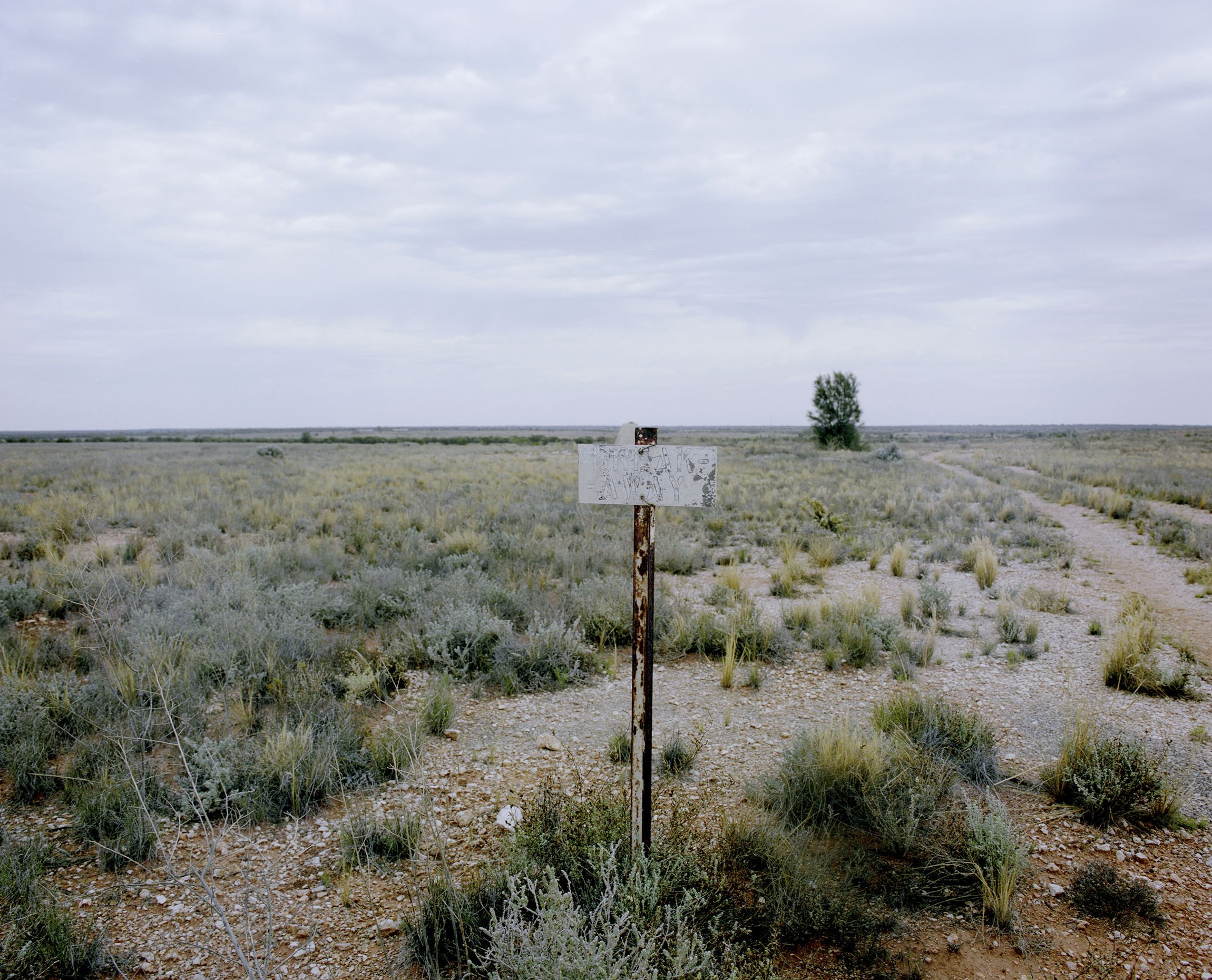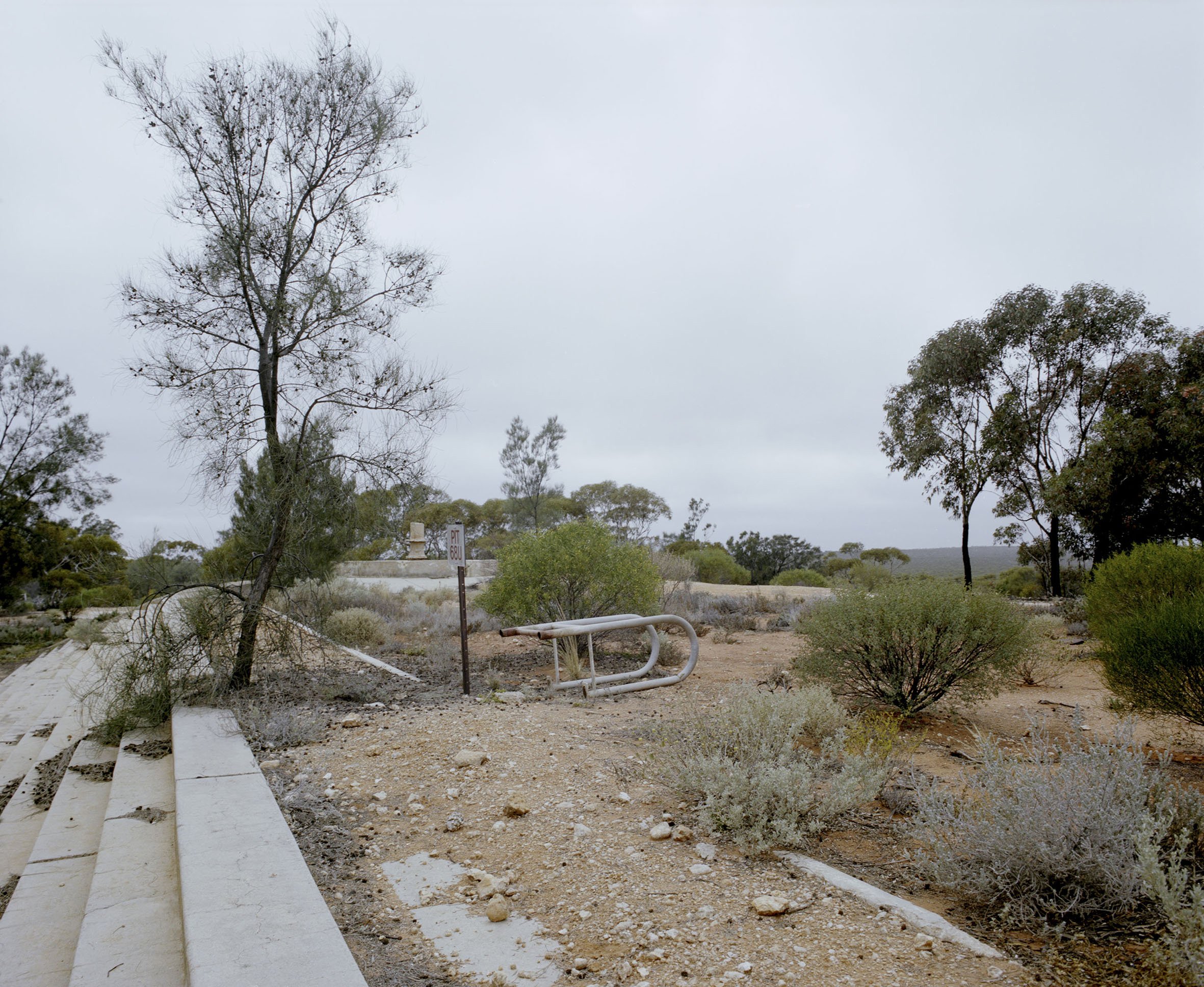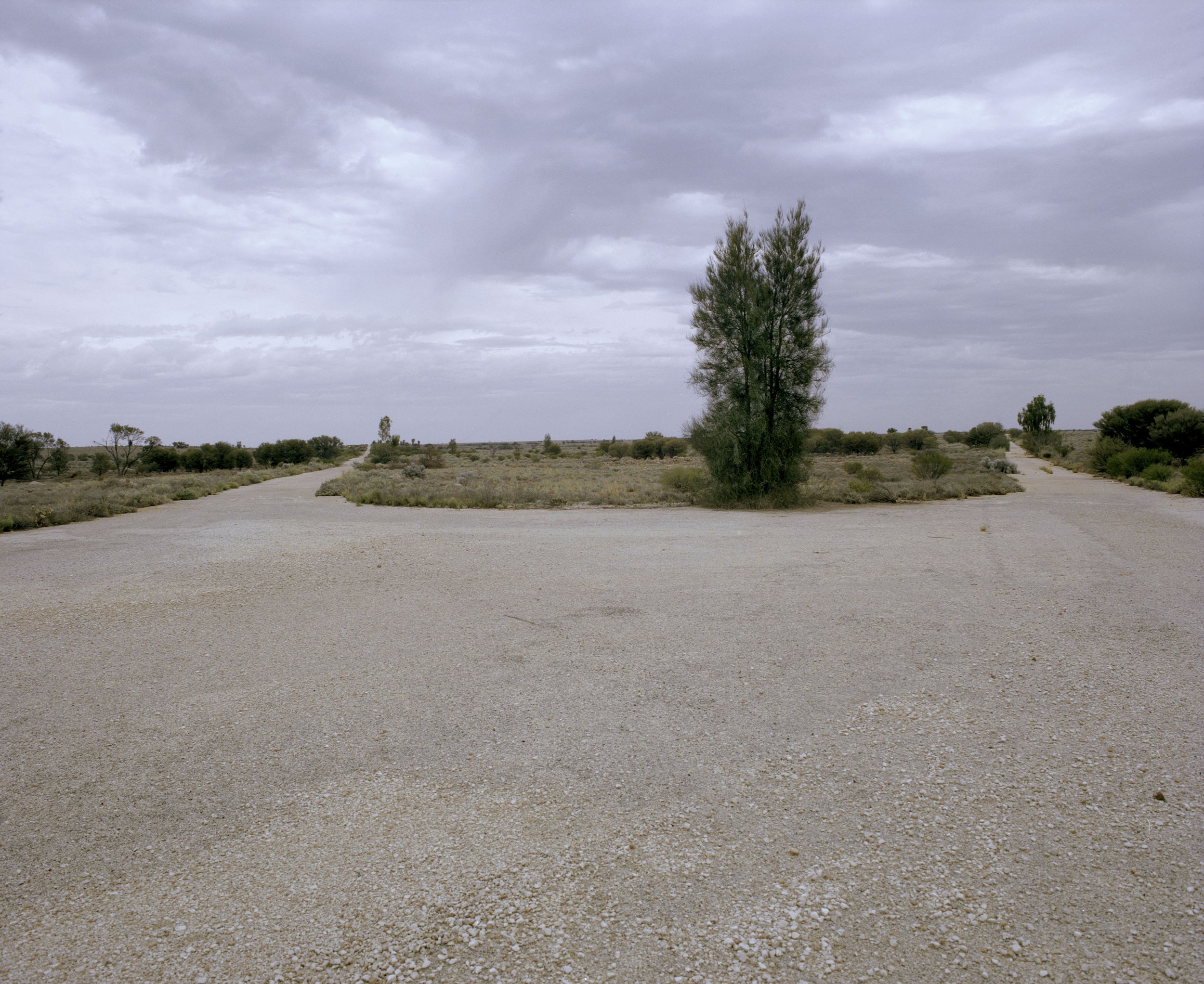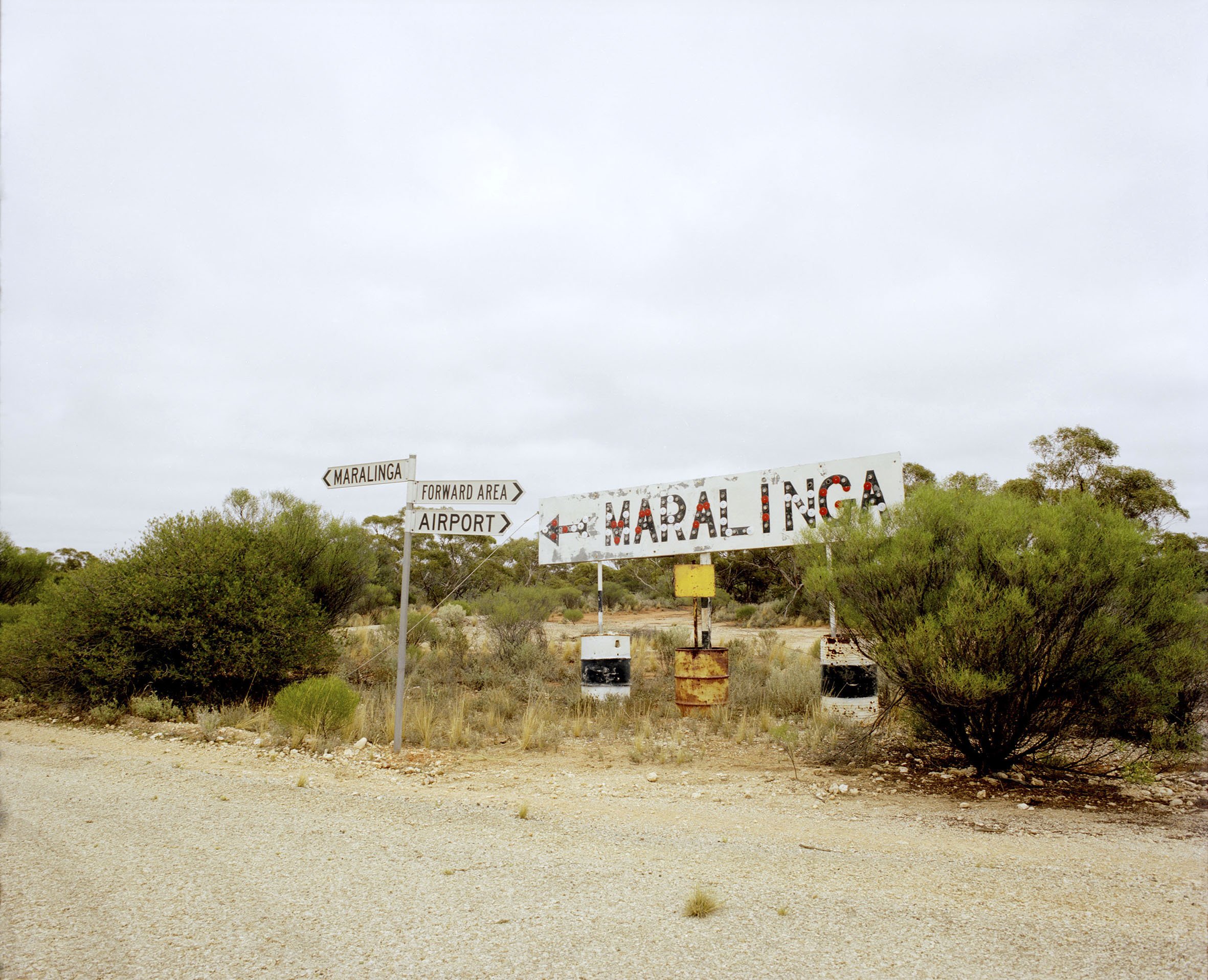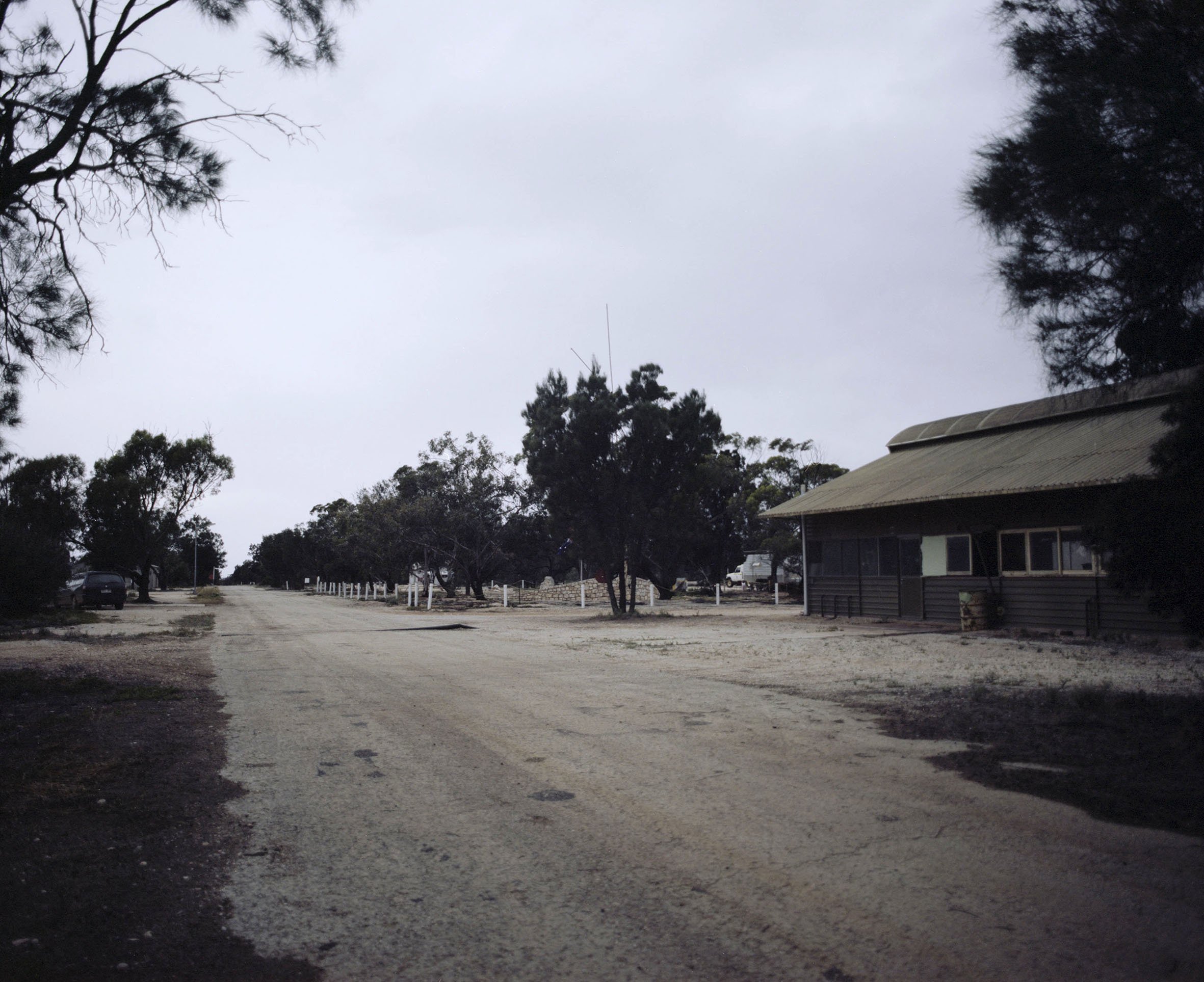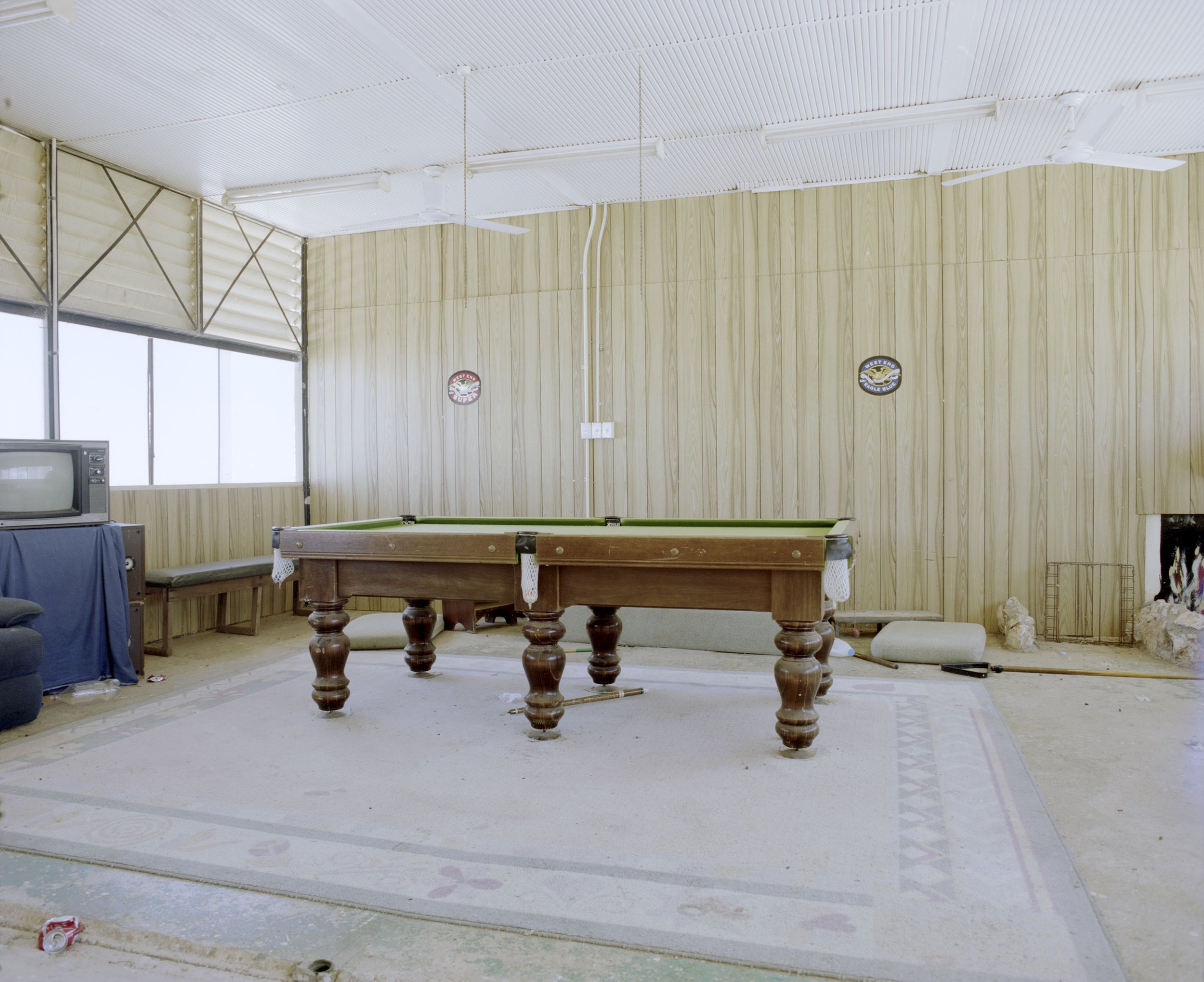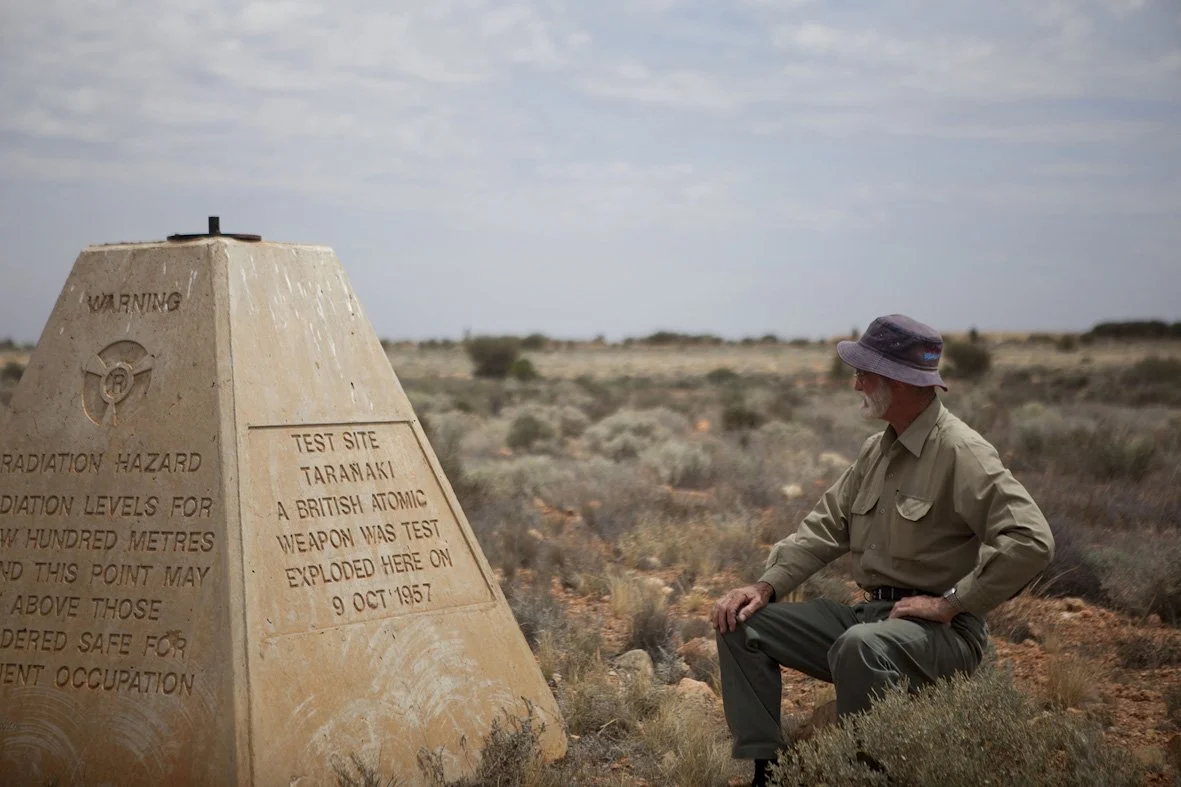
“It should not be surprising that the Australian Government holds back from describing Maralinga as a place of war. It might also be hard for Australians generally to stomach the idea that their country was actively ‘at war’ for more than a decade during the 1950s and 1960s and that the Australian ‘homeland’ became a ‘war zone’ at this time. [Maralinga is] still contaminated and uninhabited, in the heart of a country where Cold War politics and science have had unrecognised impacts.”
- Paul Brown, 2006.
‘Maralinga Pieces’ 2012
Between 1952 and 1963 the British Government performed nuclear weapons tests at Maralinga and Emu Field in South Australia and Monte Bello Islands off the coast of Western Australia. A total of twelve major nuclear tests were performed, and up to 700 minor ‘dirty’ trials were also conducted. Many Aboriginal people and nuclear veterans have either died or are still suffering the physical and psychological effects of these tests.
The first of the major test series at Maralinga was codenamed Operation Buffalo. It consisted of exploding four nuclear bombs, the first named One Tree was 12.9 kilotons equivalent. The fallout was found as far away as the Northern Territory, New South Wales and Queensland. These tests were heavily criticised as they were exploded in inappropriate conditions according to the McClelland Royal Commission, in 1985.
At 4:15pm on October 9th, 1957, Taranaki, the last of the seven major nuclear tests and last of the Operation Antler series, was detonated while suspended from a balloon. Official reports say that it yielded a massive 26.6 kilotons of TNT equivalent (almost twice as much as “Little Boy” the bomb dropped on Hiroshima in 1945). Evidence from the damage caused to props and trees in the vicinity suggest that it was much larger.
The Maralinga village, located over 1000km north-west of Adelaide in remote South Australia, hosted 8,000 Australian service personnel and 22,000 British personnel over the entire eleven years the project was underway. The village contained an airport, photography lab, bar, swimming pool, tennis court, football field, cricket pitch and cinema; not many of these structures are left today, but what does remain is overgrown and crumbling or converted to pits for radioactive debris.

